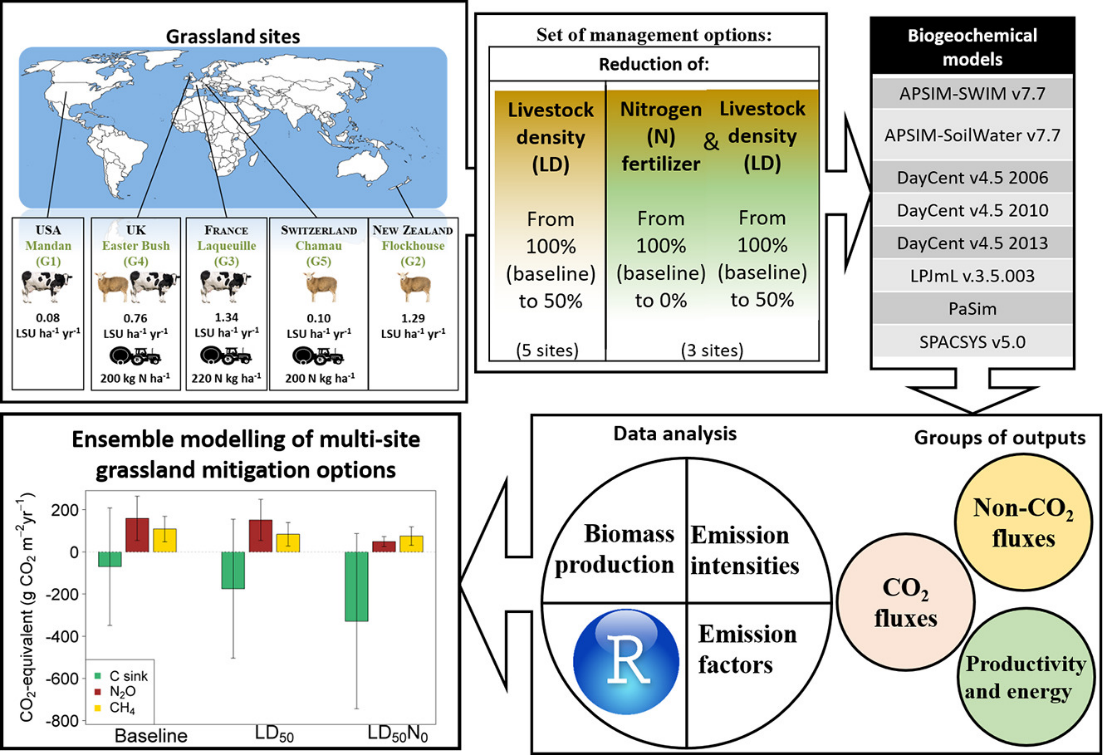Using grassland models to determine sound mitigation practices while quantifying the uncertainties
APSIM was one of several models included in the work recently published in Science of the Total Environment – “The use of biogeochemical models to evaluate mitigation of greenhouse gas emissions from managed grasslands” https://doi.org/10.1016/j.scitotenv.2018.06.020

Simulation models quantify the impacts on carbon (C) and nitrogen (N) cycling in grassland systems caused by changes in management practices. To support agricultural policies, it is however important to contrast the responses of alternative models, which can differ greatly in their treatment of key processes and in their response to management. We applied eight biogeochemical models at five grassland sites (in France, New Zealand, Switzerland, United Kingdom and United States) to compare the sensitivity of modelled C and N fluxes to changes in the density of grazing animals (from 100% to 50% of the original livestock densities), also in combination with decreasing N fertilization levels (reduced to zero from the initial levels). Simulated multi-model median values indicated that input reduction would lead to an increase in the C sink strength (negative net ecosystem C exchange) in intensive grazing systems: −64 ± 74 g C m−2 yr−1 (animal density reduction) and −81 ± 74 g C m−2 yr−1 (N and animal density reduction), against the baseline of−30.5±69.5 g C m−2 yr−1 (LSU [livestock units] ≥ 0.76 ha−1 yr−1). Simulations also indicated a strong effect of N fertilizer reduction on N fluxes, e.g. N2O-N emissions decreased from 0.34 ± 0.22 (baseline) to 0.1 ± 0.05 g N m−2 yr−1 (no N fertilization). Simulated decline in grazing intensity had only limited impact on the N balance. The simulated pattern of enteric methane emissions was dominated by high model-to-model variability. The reduction in simulated offtake (animal intake + cut biomass) led to a doubling in net primary production per animal (increased by 11.6 ± 8.1 t C LSU−1 yr−1 across sites). The highest N2O-N intensities (N2O-N/offtake) were simulated at mown and extensively grazed arid sites. We show the possibility of using grassland models to determine sound mitigation practices while quantifying the uncertainties associated with the simulated outputs.
